- Home
- Kathy Reichs
Bones of the Lost Page 18
Bones of the Lost Read online
Page 18
“An M16. Standard Marine artillery.”
“How many shots?” I was also talking to mask my anxiety.
“The M16’s got a thirty-round clip. Gross emptied his.”
That was overkill, even for two targets.
“What kind of rounds?”
“NATO-standard five-point-five-six millimeter.”
“Velocity?”
“Nine hundred and forty MPS. Anything under a thousand, popcorn!”
In his not so graceful way, Blanton was referring to a sequence of events that occurs with certain types of projectiles. If the bullet tumbles, or yaws, it can fragment, sending metal into the surrounding flesh. This type of wound can be much more damaging than a clean through-and-through shot.
“Do witness statements say anything about the sequence of fire?” I asked.
Blanton checked his notes.
“Witnesses reported hearing a burst, a pause, then another burst. But everyone says the same thing. The scene was chaos.”
I glanced up at the delegates. Their faces were still at the glass, grim and resolute. I imagined mine looked the same.
When I’d sorted the entire contents of Rasekh’s body bag, I began a running commentary on what I was seeing. As was my habit, I worked from the head toward the feet.
“Identifiable cranial features indicate a middle-aged male.” I listed them. “Dentition fragmented and incomplete, but consistent in age and gender with the subject, Abdul Khalik Rasekh.”
“That really necessary?” Blanton sounded impatient.
“Things get confused, memories fade. Identification is always a first step in any exhumation.”
I continued through the wreckage, noting features relevant to Rasekh’s biological profile. A fragment of pubic symphysis confirmed my age estimate. Pubic bone shape said the remains were those of a male.
But the slivers, bits, and chunks that represented the torso were too shattered and abraded to yield any information as to cause of death.
Despite my resolve to stay calm, agitation crept into my voice. Blanton noticed.
“You okay, doc?”
“Peachy.”
Backhanding hair from my forehead, I rechecked every fragment from Rasekh’s midsection, this time using the magnifying lens. It was like viewing cookie crumbs smoothed by a tumbler.
As I worked, the morning’s headache crept back. A tight feeling built in my chest. I’d said bullet trajectory was easy to analyze. They’d brought me seven thousand miles to do that. So far I was failing.
I was examining a sixty-centimeter segment of humerus when I noticed an almost invisible spray crosscutting the surface.
“There may be something here.” I angled the bone so Blanton’s camera could pick up the marks.
“Could be powder stippling. But it’s evenly distributed.”
“So no way to tell direction,” Blanton guessed.
“No.” After a few more moments of angling and squinting.
Disappointed, I dictated a description of the defect. Blanton took several more close-ups with a Nikon and scale, then shot backups with a Polaroid.
“These babies have come a long way from the clunkers we used in the old days.” Blanton pulled the image free and laid it on the counter. “Fourteen megapixels, inkless three-by-five prints. The detail is passable in a pinch. I’ve seen way too many disasters with supposedly error-proof top-of-the-line equipment. I always shoot backups.”
Hats off to you, Mr. Blanton.
I continued searching, fragment by fragment.
And came up blank.
Discouraged, I straightened and rolled my shoulders. The clock said 12:10.
“Break?” Blanton asked.
I shook my head. “Now that the bones are arranged, Rasekh goes back to radiology.”
Blanton called for the tech who’d X-rayed the remains while still wrapped in their shroud. He arrived in moments. Harold. After instruction from me, Harold wheeled the gurney out through the doors.
“Unless the films pick up something I’ve missed, which is unlikely, Rasekh is a bust. Let’s move on.”
I dictated the second man’s name. Ahmad Ali Aqsaee. After adding the other relevant information, I viewed the X-rays of Aqsaee in his shroud.
And relaxed a micron.
Aqsaee was in better condition than Rasekh. Made sense. He was still underground when the mortar hit. Nevertheless, normal postmortem damage appeared extensive.
Satisfied there was nothing amiss in the shroud, I crossed to the gurney, unzipped the body bag, and laid back the fabric.
Beside me, Blanton inhaled sharply.
Like Rasekh, Aqsaee had been reduced to bone. But his skeleton differed in one striking way.
The uninitiated think bone is white. They picture Halloween posters, instructional models from biology class, or the bleached cattle rib cages popular in western movies. But bone often takes on the pigment of the substrate in which it is buried.
That had happened with Aqsaee. His skeleton was the color of old saddle leather.
“That’s not something you see every day.”
“It’s not uncommon,” I told Blanton. “Most likely minerals leeched from the rocks or soil.”
“Why only this guy?”
“Could be the elemental makeup was different at the back of the cemetery. Maybe runoff from the hillside percolated through Rasekh’s grave, washing the critical component away.”
“The staining won’t cause you problems?”
“No.”
I approached the younger man exactly as I had the older. With only slightly less trepidation.
I confirmed that all skeletal and dental features were consistent with Aqsaee’s bio profile. Male. Seventeen years old.
“Doc.”
“I looked at Blanton.”
“The rest of the team needs lunch.”
Reluctantly, I agreed. Thirty minutes later we were back. I began my trauma analysis.
The skull was pristine. No fractures. No bullet holes.
Blanton shot close-ups from multiple angles.
Though the mandible was broken at the midline, I suspected the damage was postmortem and due to pressure from the overlying soil.
More photos.
The arms and legs showed no evidence of trauma. I moved on to the rib cage.
Aqsaee’s midsection was damaged almost as badly as Rasekh’s. Viewing the fragmented ribs, broken clavicles, and crushed and abraded vertebrae, scapulae, and sternum, I felt my chest tighten anew.
Unbidden, my eyes rolled to the observation window. On the far side, I could see Welsted and the delegates in heated discussion. The tall man was gesturing wildly. As I watched, he turned and stabbed a finger at the glass.
Blanton saw the argument, too.
“I’ll check it out.”
Pouring gasoline on a fire? Maybe, but I didn’t try to stop him. My whole focus was on Aqsaee’s thoracic region.
One by one, I lifted and inspected each fragment. I’d been at it ten minutes when I spotted a defect on a two-centimeter segment of rib. Though incomplete, the circular shape was classic. I set the segment aside.
Seven minutes later I found another partial defect. Then another.
With growing excitement, I identified and oriented four roughly triangular shards that, in life, had made up the sternum.
My heartbeat ratcheted up.
Moving carefully, I flipped and reconnected the shards in order to observe the back of the bone.
And had to restrain myself from raising the roof.
Bang! Bang!
My head swiveled to the window. The tall man had struck it with his fist. Blanton was trying to talk him down. I could no longer see Welsted.
I was too pumped to care what their issue was.
I’d send the bones for X-ray. Wouldn’t matter.
I knew what had happened.
AN HOUR AFTER finishing, I was at the blond oak table in the conference room at base ops headquarters. The
observers had been dispatched with promise of a full report and permission to transport Aqsaee and Rasekh back to Sheyn Bagh for reburial.
The others were in the exact same chairs they’d occupied on Tuesday. So was I. Weird how people do that.
Large crescents darkened Blanton’s pits, mimicking the bags hanging under his eyes. He’d disappeared after we left the hospital. I wondered where he’d gone. What he’d done to work up such a sweat.
“You okay?” I asked, more to pass time than out of concern for Blanton’s health. As before, we were waiting for Colonel Fisher.
Blanton shrugged one shoulder. “Might be coming down with something.”
After that, we all sat in silence. Minutes passed. Blanton, Welsted, and I knew what we’d found. Noonan did not. He was tense.
Noonan and Welsted half rose when Fisher appeared. Blanton and I remained seated.
Fisher closed the door and took her place at the head of the table. “So.” Quick smile to me. “You’ve finished.”
“I have.”
“I understand you saw some action out there.”
“It wasn’t dull.”
“Proceed.” Fisher leaned back, hands folded in her lap.
“It’s the ever-popular good news and bad news,” I said.
“Hit us with the bad.”
“Mr. Rasekh’s remains were far too damaged to allow any conclusion concerning bullet trajectory. Concerning cause or manner of death at all.”
Fisher offered a tight nod. “And the good news?”
“Mr. Aqsaee was in better shape. Though postmortem damage was extensive, gunshot trauma was evident in the thoracic region. I was able to observe, describe, and record partial entrance and exit wounds on two rib fragments, one vertebra, and on the anterior and posterior surfaces of the sternum.”
One of Fisher’s brows arched slightly.
“His breast bone.”
“Go on.”
“Do you want a full biomechanical description of the fracture patterning?”
“Save that for your report. For our purposes, the bottom line will do.”
“Second Lieutenant Gross did not shoot Ahmad Ali Aqsaee in the back.”
Though quiet before, the room now went deathly still.
A beat, then Fisher said, “Maybe we could use a little more than that.”
“I was able to identify three entrance wounds and two exit wounds. Together these impact sites described at least two bullet paths. The trajectory in both cases was anterior to posterior.”
Same eyebrow.
“The bullet entered Mr. Aqsaee’s chest and exited his back.”
“A finding that corroborates Second Lieutenant Gross’s account of the incident.”
“Yes.”
“How confident are you of your conclusion?”
“Very.”
“Based on some little nicks in the bone?”
“In addition to the entrance and exit holes, metal fragments were visible on X-ray. Their orientation supports a conclusion of front-to-back movement.” I’d spotted this when viewing the films of Aqsaee’s unwrapped and semi-rearticulated bones.
Noonan leaned forward. “You’re saying that the younger victim is a hundred percent?”
“Nothing is ever a hundred percent.”
“Within reasonable medical certainty.”
“Yes,” I said.
Noonan ran a hand over his jaw. Exhaled through his nose.
Fisher still had questions.
“What about ricochets? Could a bullet go in from behind, bounce around the ribs or sternum or whatever, and double back?”
I shook my head. “Bullets don’t boomerang like that. If a round enters through a victim’s—”
“Can we stop calling them victims now?”
The sharpness of tone startled everyone. Fisher responded.
“What would you prefer, Mr. Blanton?”
“Insurgents? Or how about shooters?”
“There is no evidence that either Aqsaee or Rasekh was armed.”
Blanton slumped back, shaking his head.
Fisher had one more query.
“Could he have shot him both in the chest and in the back?”
“That is theoretically possible, if he’d been spun around by continued bullet strikes, but I found no indications of back entry or front exits.”
“So Gross may be innocent.” Noonan’s tone was flat, no surprise, relief, or skepticism.
“Please understand me,” I cautioned. “All I am saying is that Mr. Aqsaee was either facing or approaching Lieutenant Gross when shot.”
Gross’s innocence or guilt was another matter, one involving variables not recorded in bone. Did the men behave in a threatening manner? Did Gross have a reasonable belief that he was in imminent danger? But that was for the lawyers, not for me.
Fisher said, “We appreciate your quick turnaround on this. Since the incident, relations with Sheyn Bagh have been shaky at best. If done poorly, this exhumation could have torpedoed what little goodwill we’ve reestablished.”
“I doubt the villagers will take comfort in my findings.”
Fisher thought about that. “No, they won’t like the outcome. But, sadly, the Afghan people know the price of war. They will accept that, under duress, a soldier was forced to make a life-and-death decision. That, under threat, he acted to save himself and his men.”
Perhaps. But I wondered what spin she and her team would use.
“You’ve done remarkable work here, Dr. Brennan. And it is truly appreciated. But I’ve been asked to impose upon you further. As you may or may not know, Second Lieutenant Gross’s Article 32 hearing was suspended to allow for this operation. Your presence at Lejeune is requested.”
I’d been anticipating this. “When?”
“Immediately.”
Crap.
“I’ll be there.”
“Arrangements for your transport have already been made. The Marine Corps thanks you. As do I.”
We all rose, shook hands, and went our separate ways.
Katy couldn’t join me for dinner, so we’d made plans the previous night for a shopping trip.
As I walked the short distance from my B-hut to the PX, an exuberant sunset turned the snowcapped mountain peaks fiery red. The prefab buildings I passed glowed more warmly than during the day, and shadows split the ground into patches of sunlight and dark.
The store was packed. I scanned, but didn’t see my daughter in the sea of camouflage.
“Hoo, boy.” I felt a double tap on my backpack. “You’d make a lousy surveillance officer.”
I turned. Katy was two feet behind me.
“Gotta watch your flank, Mom.”
“Technically, you’re not on my flank.”
Katy smiled. She wore fatigues and boots. And an M16 slung over one shoulder.
So strange to see my daughter packing heat.
“Grab some caffeine?” she asked.
“Sure.”
The Green Bean’s interior looked like any café you’d find back home. A wall menu offered a zillion variations on coffee and tea. An espresso machine hissed intermittently in the background. Or was it cappuccino?
“What’s your poison?” I asked. “I’m buying.”
“Regular, just milk.”
Another surprise. My daughter’s preference in coffee now matched her new hairstyle. Simple and practical.
We settled into chairs by a wall covered with military patches. The leitmotif was all about combat: skulls, swords, iron crosses. The 335th FTR SQDN called themselves the Chiefs.
Katy noticed me eyeing the assemblage. “A lot of units have their own badges. They’re kind of like family crests.”
I knew that, but let her explain. I didn’t care the topic of conversation, was just happy to be spending time with my kid.
At one point Katy asked about my investigation.
“It went well,” I said.
“So you’re done?”
“I leave
tomorrow.”
Katy didn’t respond. I wondered. Was she sad I was going? Relieved? Had I invaded a world she wished to keep as her own?
“I met two women in Manas.” She spoke after a pause that seemed to go on forever. “At Pete’s Place.”
“What’s that?”
“A bar on base. At Manas, service members are allowed two drinks every twenty hours. Or something like that. Except marines.”
“Why not marines?”
“I guess a few got overserved and blew it. I don’t know the whole story. Anyway, it’s much more civilized there than in Afghanistan.”
“Not loving the no-alcohol policy?”
She rolled her eyes. “So these women were a mother-and-daughter team who’d enlisted, trained, and deployed together.”
“Seriously?”
“They were Air Force, assigned to some sort of escort duty.”
“Are you suggesting we buddy up?”
Loud guffaw. Another pause, then, “My unit’s heading out again in two days.”
“Heading where?”
“To the north. That’s all I can say. Actually, that’s all I know.”
“I understand.” I did. And hated it.
Katy finished the dregs of her oh-so-plain coffee and asked, “Ready to cruise the mall?”
We both laughed. The Bagram “mall” consisted of a warren of shops and kiosks, most selling locally manufactured products. Brass, wood, and fabric items. Jewelry. Rugs. That was about it.
“Lead on, empress of shopping,” I said.
She did.
“Are the merchants all Afghans?” I asked as we walked.
“I think so. They come in the morning, clear security, operate their stalls, clear security again, and head home. We’re talking sixteen-, seventeen-hour days.”
As we passed, vendors entreated us gently to inspect their wares. Now and then we stopped. I was admiring an intricately woven scarf when something brushed my free hand. I turned.
An Afghan girl of about fifteen or sixteen was standing close, her large brown eyes fixed on my face.
“Hello.” I smiled.
The girl whispered in Pashto or Dari. I caught only one word. Allah.
“I’m sorry,” I said. “I don’t understand.”
Eyes cutting left and right, the girl repeated what she’d said. Maybe. Again, all I caught was Allah.
Did the girl want something? Or was she just trying to spread the word?

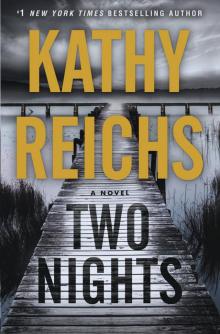 Two Nights
Two Nights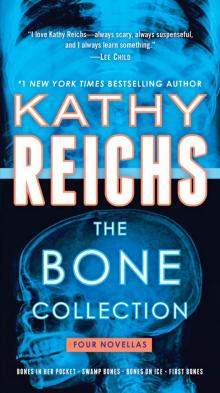 The Bone Collection: Four Novellas
The Bone Collection: Four Novellas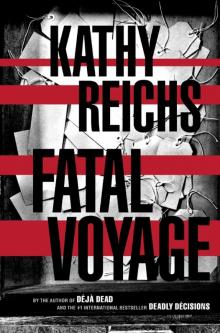 Fatal Voyage
Fatal Voyage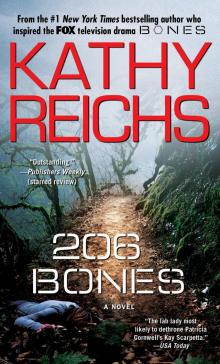 206 Bones
206 Bones Bones to Ashes
Bones to Ashes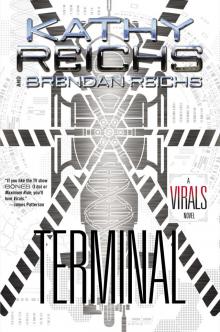 Terminal
Terminal Monday Mourning
Monday Mourning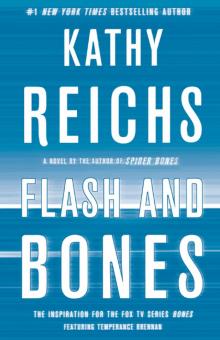 Flash and Bones
Flash and Bones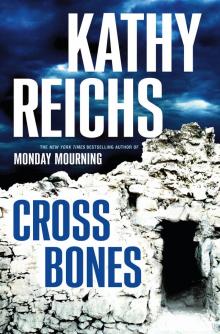 Cross Bones
Cross Bones Devil Bones
Devil Bones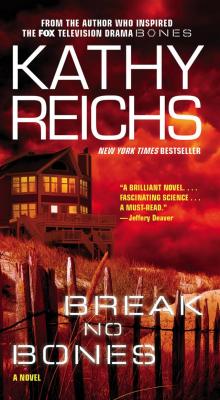 Break No Bones
Break No Bones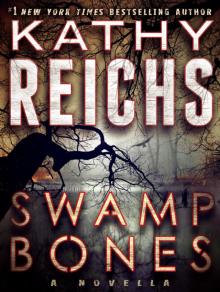 Swamp Bones
Swamp Bones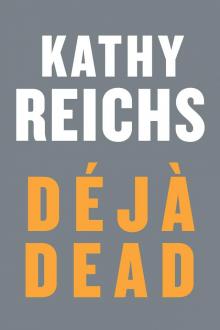 Déjà Dead
Déjà Dead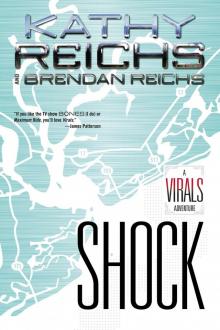 Shock
Shock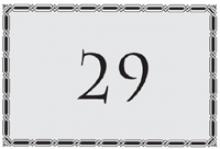 Spider Bones
Spider Bones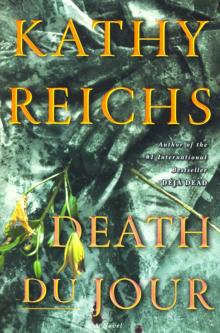 Death Du Jour
Death Du Jour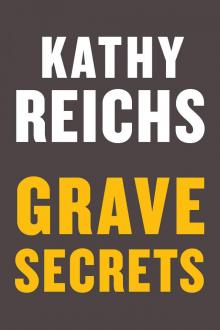 Grave Secrets
Grave Secrets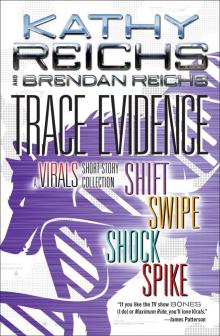 Trace Evidence: A Virals Short Story Collection
Trace Evidence: A Virals Short Story Collection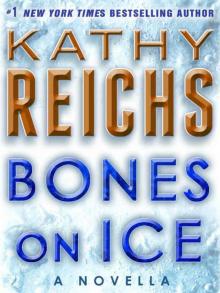 Bones on Ice
Bones on Ice The Bone Code
The Bone Code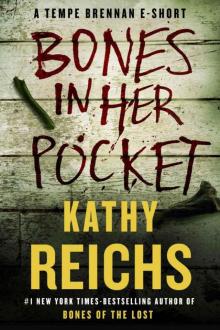 Bones in Her Pocket
Bones in Her Pocket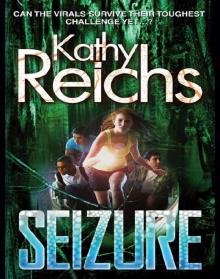 Seizure:
Seizure: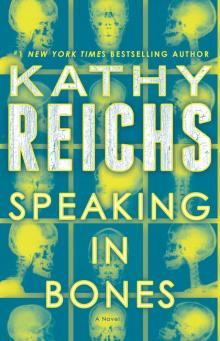 Speaking in Bones
Speaking in Bones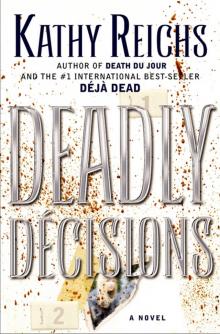 Deadly Decisions
Deadly Decisions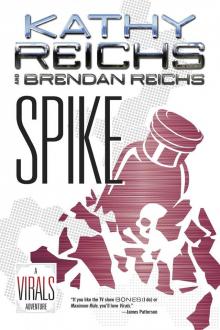 Spike
Spike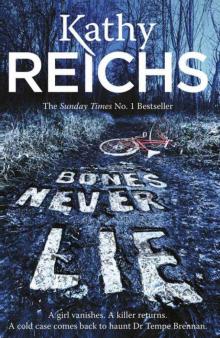 Bones Never Lie
Bones Never Lie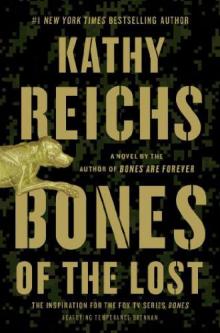 Bones of the Lost
Bones of the Lost Virals 03.5 - Swipe
Virals 03.5 - Swipe Exposure
Exposure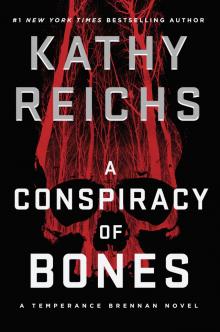 A Conspiracy of Bones
A Conspiracy of Bones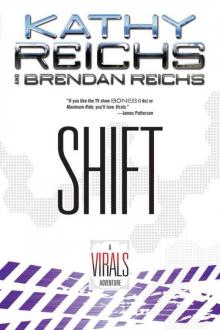 Shift (tory brennan)
Shift (tory brennan)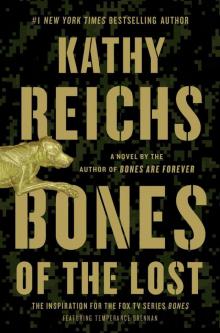 Bones of the Lost: A Temperance Brennan Novel tb-16
Bones of the Lost: A Temperance Brennan Novel tb-16 Virals tb-1
Virals tb-1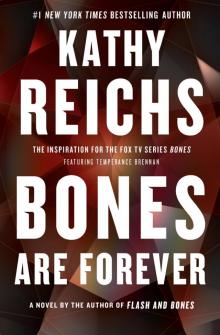 Bones Are Forever tb-15
Bones Are Forever tb-15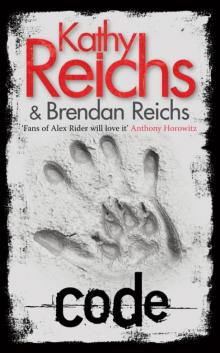 Code tb-3
Code tb-3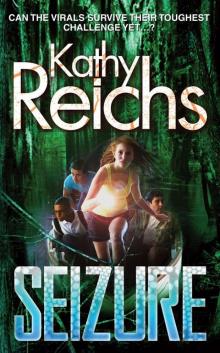 Seizure tb-2
Seizure tb-2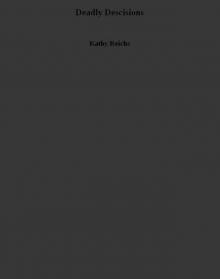 Deadly Descisions
Deadly Descisions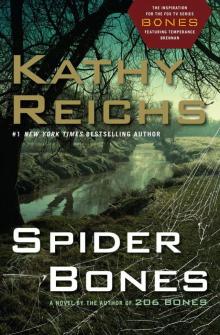 Spider Bones: A Novel
Spider Bones: A Novel